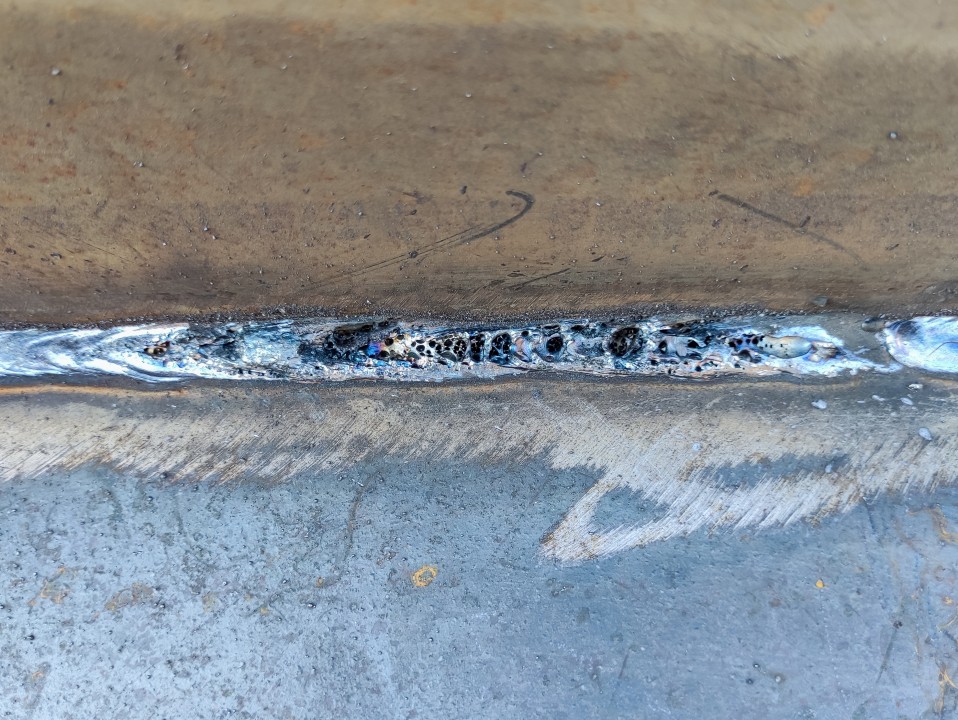Comprehensive Overview: What is Porosity in Welding and Exactly How to avoid It
Comprehensive Overview: What is Porosity in Welding and Exactly How to avoid It
Blog Article
Recognizing Porosity in Welding: Checking Out Causes, Effects, and Prevention Strategies
Porosity in welding is a persistent difficulty that can dramatically impact the top quality and honesty of welds. As professionals in the welding market are well conscious, recognizing the reasons, effects, and prevention methods related to porosity is vital for accomplishing durable and reliable welds. By delving right into the origin triggers of porosity, examining its damaging impacts on weld top quality, and exploring effective avoidance techniques, welders can improve their expertise and abilities to produce high-quality welds constantly. The elaborate interaction of factors contributing to porosity calls for a comprehensive understanding and a positive strategy to guarantee successful welding end results.
Typical Sources Of Porosity
Porosity in welding is mainly created by a combination of variables such as contamination, incorrect protecting, and inadequate gas insurance coverage during the welding process. Contamination, in the type of dust, oil, or rust on the welding surface, develops gas pockets when warmed, causing porosity in the weld. Incorrect protecting takes place when the shielding gas, generally utilized in processes like MIG and TIG welding, is incapable to totally protect the molten weld swimming pool from reacting with the surrounding air, resulting in gas entrapment and subsequent porosity. Furthermore, insufficient gas insurance coverage, often due to inaccurate flow rates or nozzle positioning, can leave components of the weld unguarded, permitting porosity to form. These variables collectively add to the formation of gaps within the weld, deteriorating its honesty and potentially triggering architectural problems. Understanding and dealing with these typical causes are important action in stopping porosity and guaranteeing the top quality and stamina of welded joints.
Impacts on Weld Top Quality
The visibility of porosity in a weld can dramatically jeopardize the overall high quality and honesty of the welded joint. Porosity within a weld develops spaces or dental caries that weaken the framework, making it much more susceptible to cracking, rust, and mechanical failure.
Additionally, porosity can hinder the efficiency of non-destructive testing (NDT) methods, making it testing to detect other defects or stoppages within the weld. This can bring about significant safety worries, especially in crucial applications where the structural honesty of the bonded parts is paramount.

Avoidance Techniques Overview
Provided the destructive influence of porosity on weld top quality, efficient prevention techniques are important to maintaining the structural honesty of bonded joints. One of the main prevention strategies is thorough cleansing of the base products before welding. Impurities such as oil, grease, rust, and moisture can add to porosity, so guaranteeing a tidy job surface is vital. Correct storage of welding consumables in completely dry conditions is additionally important to avoid moisture absorption, which can result in gas entrapment throughout welding. In addition, choosing the proper welding criteria, such as voltage, present, and travel speed, can aid lessen the danger of porosity formation. Guaranteeing appropriate protecting gas circulation and insurance coverage is one more essential avoidance method, as not enough gas coverage can cause climatic contamination and porosity. Proper welder training and qualification are vital for carrying out preventive measures properly and continually. By including these avoidance techniques right into welding practices, the incident of porosity can be considerably decreased, leading to more powerful and much more trusted bonded joints.
Significance of Appropriate Shielding
Appropriate securing in welding plays a crucial duty in avoiding climatic contamination and guaranteeing the stability of bonded joints. Securing gases, such as argon, helium, or a mix of both, are commonly utilized to secure the weld swimming pool from reacting with aspects airborne like oxygen and nitrogen. When these responsive aspects enter into contact with the hot weld swimming pool, they can create porosity, causing weak welds with reduced mechanical buildings.

Poor protecting can cause different flaws like porosity, spatter, and oxidation, endangering the structural stability of the welded joint. Therefore, sticking to correct shielding methods is vital to create top notch welds with minimal issues and make sure blog the durability and dependability of the bonded elements (What is Porosity).
Tracking and Control Methods
Exactly how can welders efficiently check and regulate the welding procedure to guarantee ideal results and avoid issues like porosity? One secret approach is with using sophisticated monitoring modern technologies. These can consist of real-time tracking systems that provide responses go to this website on specifications such as voltage, present, take a trip speed, and gas flow prices. By continuously keeping an eye on these variables, welders can recognize discrepancies from the perfect problems and make immediate changes to stop porosity formation.

Additionally, carrying out proper training programs for welders is necessary for monitoring and controlling the welding procedure properly. What is Porosity. Enlightening welders on the significance of preserving consistent parameters, such as appropriate gas securing and take a trip speed, can aid stop porosity concerns. Routine assessments and qualifications can likewise guarantee that welders are proficient in tracking and managing welding processes
Additionally, making use of automated welding systems can improve surveillance and control capabilities. These systems can specifically manage welding criteria, decreasing the likelihood of human error and guaranteeing regular weld top quality. By combining advanced monitoring innovations, training programs, and automated systems, welders can properly check and control the welding process to reduce porosity defects and attain high-quality welds.
Conclusion

Report this page